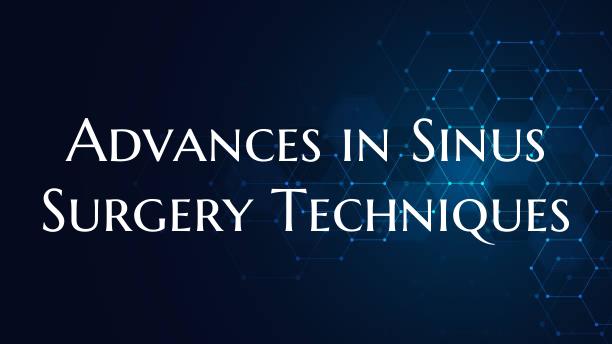
Advances in Sinus Surgery Techniques
Introduction: Sinus surgery has evolved significantly over the years, leading to the development of advanced techniques that offer more precise and effective treatment options for patients suffering from sinus-related conditions. These advances have improved surgical outcomes, reduced recovery times, and minimized complications associated with traditional approaches. In this article, we will explore some of the latest advancements in sinus surgery techniques that are revolutionizing the field of rhinology.
1. Image-Guided Surgery: Image-guided surgery, also known as computer-assisted navigation, is a cutting-edge technique that allows surgeons to have real-time visual feedback during the procedure. By using detailed imaging scans of the patient's sinuses, the surgeon can navigate through complex anatomical structures with greater accuracy, leading to more targeted and precise treatment. This technology enhances the safety and outcome of sinus surgeries, especially in cases involving difficult anatomy or revision procedures.
2. Balloon Sinuplasty: Balloon sinuplasty is a minimally invasive technique that has gained popularity in recent years for the treatment of sinusitis. During this procedure, a small, flexible balloon catheter is inserted into the blocked sinus cavity and inflated to gently widen the passageway. By dilating the sinus opening, the procedure helps to restore normal sinus drainage and ventilation without the need for traditional surgical techniques. Balloon sinuplasty is associated with less pain, shorter recovery times, and a reduced risk of complications compared to traditional sinus surgeries.
3. Endoscopic Sinus Surgery: Endoscopic sinus surgery is a standard procedure used to treat chronic sinusitis and other sinus-related conditions. However, recent advances in endoscopic technology have allowed for more precise and controlled surgical interventions. High-definition cameras and specialized instruments enable surgeons to access and treat hard-to-reach areas within the sinuses while minimizing trauma to surrounding tissues. This approach offers improved visualization, reduces the risk of complications, and promotes faster healing compared to conventional open surgeries.
4. Stereotactic Navigation: Stereotactic navigation is a state-of-the-art technique that combines advanced imaging technology with precise intraoperative guidance to enhance the accuracy of sinus surgery. By registering the patient's preoperative imaging data with their actual anatomy in the operating room, surgeons can create a 3D map of the sinuses and navigate with sub-millimeter accuracy. This technology aids in the precise removal of diseased tissue, reduces the risk of complications, and improves overall surgical outcomes.
Conclusion: Advances in sinus surgery techniques have revolutionized the field of rhinology, offering patients safer, more effective, and less invasive treatment options for sinus-related conditions. The evolution of image-guided surgery, balloon sinuplasty, endoscopic techniques, and stereotactic navigation has transformed the way sinus surgeries are performed, leading to improved outcomes, quicker recovery times, and enhanced patient satisfaction. As technology continues to advance, sinus surgeons can expect further innovations that will shape the future of sinus surgery and further improve patient care.